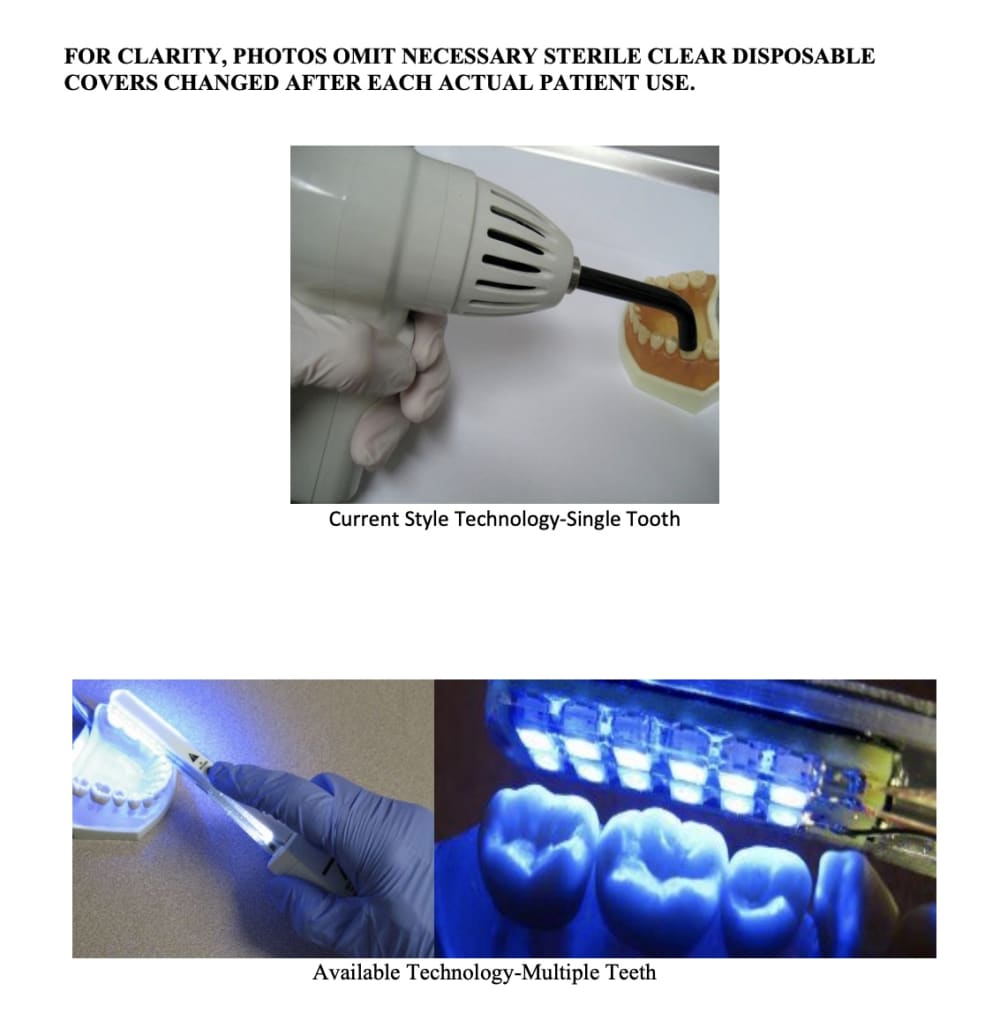Healthcare authorities worldwide endorse preventive sealants on newly erupted teeth of children. Sealants are often thin photosensitive flowable resins placed as a layer over select chewing surfaces of natural and healthy back teeth. Once exposed to an appropriate light illumination source for approximately 20 seconds, photochemical reactions in the sealant will cure (polymerize) and harden to become an integral protective part of the tooth. Once cured on chewing surfaces of tooth enamel, sealants resist the potential ingress of harmful cavity initiating factors like bacteria.
Current sealant methods allow positioning and curing sealants on one tooth at a time. All unsealed primary deciduous teeth of young children are especially susceptible to the aggressive damaging effects and expenses associated with tooth decay, yet are typically never sealed.
LEDs are known light sources for curing sealants. The typical working end of sealant LED curing units comprise:
- Handheld devices with an optical extension tip that transmits light from the LEDs to the sealant.
- Custom high brightness LEDs with heatsinks, drivers and/or power supplies.
Alternatively, simple small rectangular or curve shaped PCBs with LED arrays at ROHS standards can be easily produced and sized to cover over an entire section of teeth in the mouth. One end of the PCB receives power from an appropriate power source, driver circuitry and timing mechanism as in many typical LED lighting systems. The other PCB free end is the insertion end. Along with several closely spaced lower power SMT LEDs with built-in wider viewing angles, the PCB is encapsulated in optically clear dielectric material inside a close fitted inexpensive thermoformed protective housing.
Additional design benefits include:
- Specialized high brightness LEDs with heatsinks typically found in conventional LED curing lights are unnecessary.
- Eliminating optical extension tips to transmit LED light from illumination sources (see figure below).
- Energy conservation with lower power consumption in the curing of sealants.
- Curing duration for dental sealants is relatively constant. Sealant coverage of multiple teeth simultaneously with a wide area compact curing light permits greater numbers of patients to have sealants on an entire section of multiple teeth in about the same time frames dedicated to sealing individual teeth.
- Utilizing widely stocked lower cost/power SMT COTS LEDs for producing curing arrays without specialized or custom component supply chains.
- Lower costs in producing simple PCBs and housings for high volume distribution.
- Compact LED/PCB size accommodates children’s smaller mouths.
- Simplicity of device allows continual upgrades with minimal engineering time, retooling and expense.
Sealants are usually placed by dental prevention professionals in clinical settings. Despite having over 1 million dental professionals worldwide, there are still no readily available quantities of inexpensive curing units for efficient sealant placement on multiple teeth. This design finally offers a compact, convenient and low cost device for sealant placement on several teeth simultaneously for every child. This new opportunity would serve millions of people and help reduce the negative potential of dental disease.
Like this entry?
-
About the Entrant
- Name:Gregory Jacob
- Type of entry:individual


